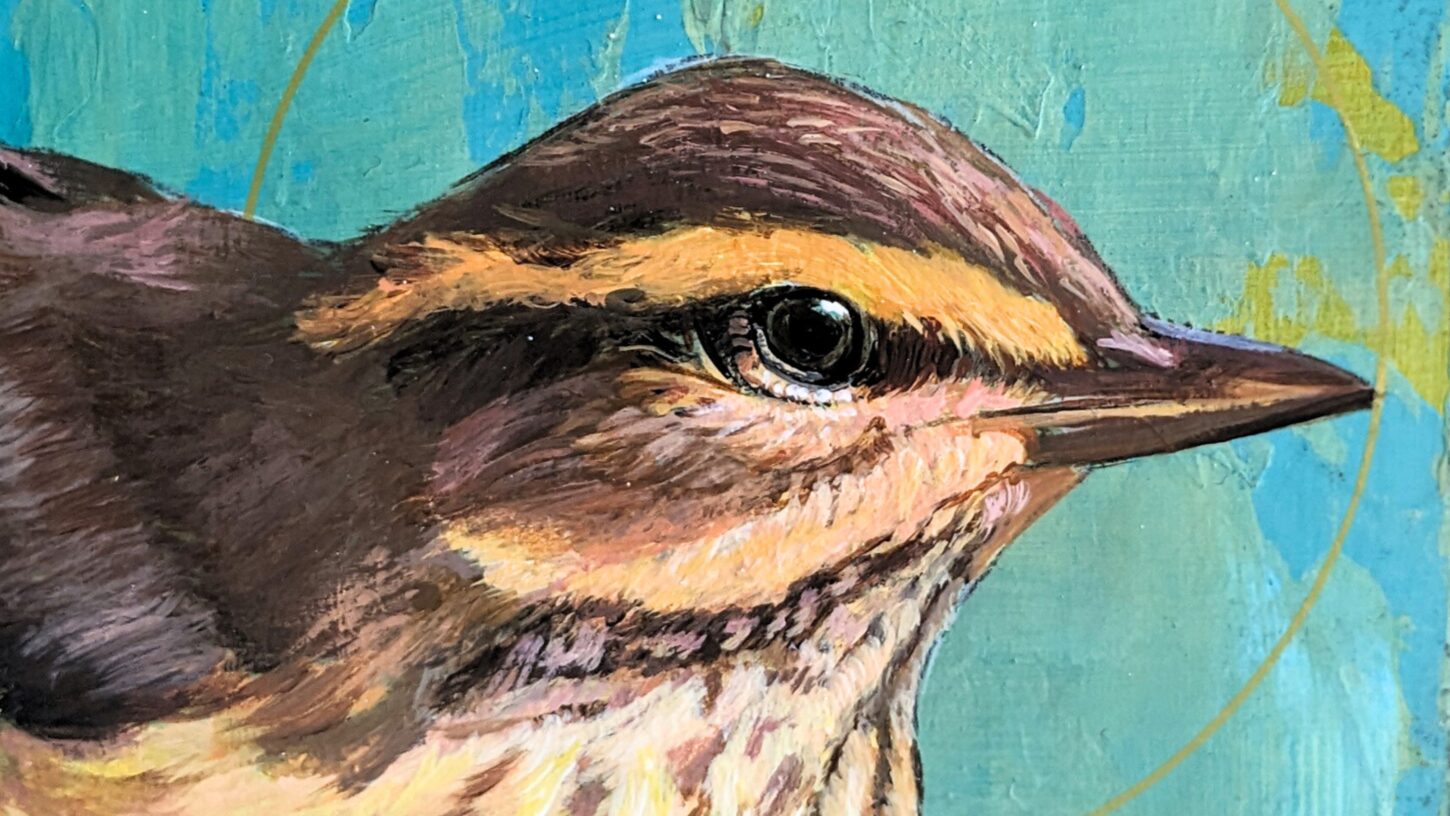
Sabra Crockett is an artist whose work profoundly reflects her relationship with nature and the intricate connections that bind humanity to the environment. Her artistic vision is rooted in a desire to highlight the often-overlooked aspects of nature, encouraging viewers to develop a sense of reverence for the creatures and ecosystems that are vital to our survival. Through her art, Crockett aims to foster a deeper connection between people and the natural world, inviting them to engage with her work on multiple levels.
Crockett’s creative process is both meticulous and intuitive, often evolving over years. She draws inspiration from various sources, including scientific articles and historical references, which inform her visual concepts. Her process begins with extensive image research, where she manipulates visuals in Photoshop to create scaled maquettes of her paintings. This preparatory work allows her to approach the canvas with clarity and intention, a skill honed during her 20 years as a scenic artist. By employing underpainting techniques with raw umber and white, she creates a luminous quality in her work, making it feel alive and vibrant.
Throughout her career, Crockett has faced significant challenges, particularly in balancing her roles as a mother and an artist. Early in her motherhood, she turned down numerous opportunities to prioritize her children’s upbringing. Now that her children are adults, she has more freedom to travel and develop her artistic practice. Additionally, she has navigated chronic health issues, including endometriosis and adenomyosis, which have influenced her work and artistic style. Painting has served as a therapeutic escape, allowing her to hyper-focus and create intricate, detailed pieces even during difficult times.
Crockett’s commitment to public art is evident in her numerous mural projects, which have become beloved fixtures in her community. Notable works include a 50-foot public mural in Fairdale, Kentucky, and a series of murals at Sake A Go Go, featuring a stunning 30-foot dragon on the ceiling and a 10-foot geisha. Her artistic contributions extend to hospitals and restaurants, where she transforms spaces with her vibrant murals, such as the beach scene in the lab department of Norton Brownsboro Hospital in Louisville, KY.
Her experience as a mother has significantly influenced her artistic style and the themes she explores. Raising two sons, one of whom is gender fluid, has heightened her awareness of shifting gender roles and the struggles that cisgender men face in finding their identity. She emphasizes the importance of compassion and vulnerability in her sons, believing that these qualities can help address systemic issues affecting women, the environment, and overall health. This perspective is reflected in her series “What Builds Us Up Can Also Tear Us Down,” which critiques the costs of industrial prosperity on the environment and marginalized communities.
Looking ahead, Crockett is preparing for her upcoming solo exhibition, “I See No Leaders,” at Wheelhouse Gallery from August 15 to September 27, 2025. This exhibition promises to showcase her unique perspective on nature and resilience, further solidifying her place in the contemporary art scene. It will feature works that respond to current environmental and political issues, including the rise of Christian Nationalism and its impact on climate change. She aims to create a space for conversation and action regarding these pressing topics.
Additionally, she is gearing up for a book signing and opening for her project “100 Bird Saints” at Surface Noise in Summer 2026, where she aims to publish a collection of her small bird paintings, a series that has garnered significant attention.
Sabra Crockett’s artistic vision intertwines themes of nature and resilience, reflecting her deep commitment to fostering connections between humanity and the environment. Through her meticulous process and dedication to public art, she continues to inspire others to appreciate the beauty and importance of the natural world, making her a significant figure in contemporary art.




